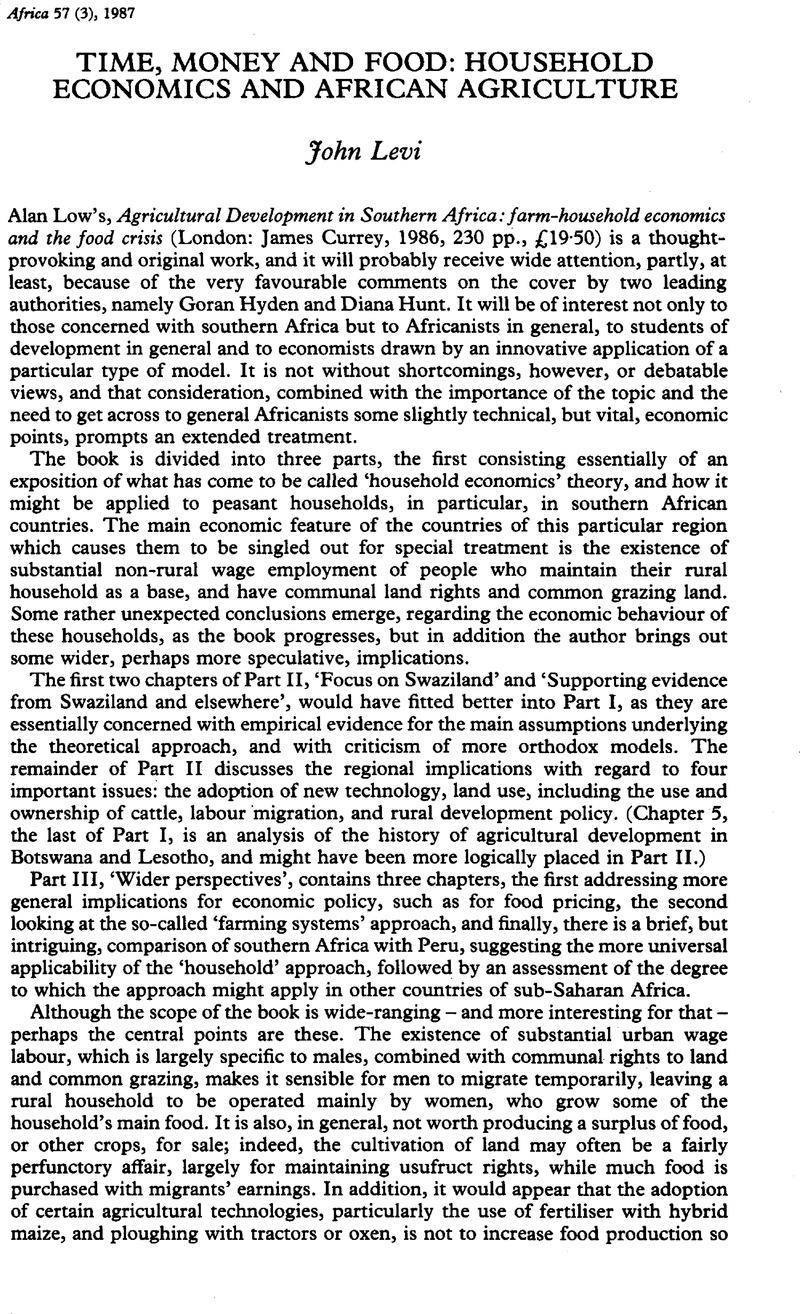No CrossRef data available.
Article contents
Time, money and food: household economics and African agriculture
Published online by Cambridge University Press: 07 December 2011
Abstract

- Type
- Review Article
- Information
- Copyright
- Copyright © International African Institute 1987
References
NOTES
1 Chayanov, A. V.. The Theory of Peasant Economy, Irwin, III.: American Economic Association, 1966.Google Scholar
2 Becker, G. S.. ‘A theory of the allocation of time’, Economic Journal, vol. 75, pp. 493–517, 1965.CrossRefGoogle Scholar
3 Norman, D. W.. ‘Economic analysis of agricultural production and labour-utilization among the Hausa in the north of Nigeria’, African Rural Employment Paper No. 4, Department of Agricultural Economics, Michigan State University, January 1972.Google Scholar
4 Nakajima, C.. ‘Subsistence and commercial farms: some theoretical models of subjective equilibrium’, in Wharton, C. R., Jr (ed.), Subsistence Agriculture and Economic Development, London: Cass, 1970.Google Scholar
5 Binswanger, H. P., Evenson, R. E., Florencio, C. A. and White, N. F. (eds.). Rural Household Studies in Asia, Singapore University Press, 1980.Google Scholar
6 Gronau, R.. ‘Leisure, home production, and work: the theory of the allocation of time revisited’, in Binswanger et ah, op cit.Google Scholar
7 Levi, J. and Havinden, M.. Economics of African Agriculture, Harlow: Longman, 1982, and J., Levi ‘Population pressure and agricultural change in the land-intensive economy’, Journal of Development Studies, vol. 13, No. 1, October 1976.Google Scholar
8 Lipton, M.. ‘Game against nature: theories of peasant decision-making’, in J., Harriss (ed.), Rural Development, London: Hutchinson, 1982, and ‘The theory of the optimising peasant’, Journal of Development Studies, 1968, pp. 327–51.Google Scholar
9 Gill, Jas. ‘Fuel wood and stoves in Zimbabwe: a system in change’, Energy Research Group, Open University, 1982.Google Scholar


